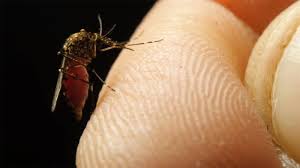US: The deadly mosquito-borne illness

New York: Eastern equine encephalitis is a mosquito-borne virus that causes a rare, potentially fatal disease and seems to be spreading across the US.
There have been 12 human cases of the virus and two deaths so far this season. It’s also killed horses across the US and been found in mosquitos in several states and in Canada.
At least a dozen cases of eastern equine encephalitis, a dangerous mosquito-borne illness, have been confirmed across the U.S. so far this season. Two people have died from the disease.
EEE, or “triple E,” is a rare but life-threatening virus that can wreak havoc in livestock and cause permanent brain damage in people, resulting in seizures, mental impairment, and even personality changes in survivors of the disease.
EEE is incurable, but its symptoms can be successfully treated if it’s caught before it spreads to the brain. About a third of patients with EEE die, either within weeks of getting this disease or years later as a result of ongoing physical and mental impairment.
Triple E is most often found in the northeastern United States in swampy, wooded areas from late spring to early fall. It can also be found in southern states into the winter months.
EEE infections this year are already beyond the typical five to 10 human cases per season. Here’s what we know about the places that are affected, and how residents can stay safe. Massachusetts has reported 10 human cases of EEE, and three people have died.
The most recent cases are a 5-year-old girl from Sudbury, who is in critical condition, and a woman in her 60s from Northborough, Boston.com reported. A man in his 50s in Bristol County was also confirmed to have been infected, according to MassLive.
In late August, a 59-year-old woman died after contracting EEE, according to NBC 10. An autopsy is being performed to confirm the cause of death.
Other cases included two men over 60 years old and one man between 19 and 30. Another man, in his 70s, was diagnosed in early September, according to Boston 25 News.
The first case was confirmed in early August, which was also the first human case off EEE in Massachusetts since 2013, CNN reported.
Following the infections, a growing number of communities have been declared at risk: more than 36 communities in the state were deemed a critical EEE risk, at least 42 at high risk, and more than 70 at moderate risk, according to the state Department of Health as of Sept. 9.
Curfews have been implemented in the affected communities to reduce the spread of the disease, since mosquitos are most active from dusk to dawn.
A resident of Kalamazoo County became the first fatal case of EEE in Michigan this season, a local news outlet reported.
The deceased was later reported to be a 64 year old man from Kalamazoo county, according to News 8.
Another case in Kalamazoo county is 14-year-old girl who was put on a ventilator after contracting EEE, a local news station reported on August 27. A Facebook page created by the girl’s parents noted September 8 that she is “comfortable” and preparing to start therapy.
Five other cases were reported across Barry, Cass, Van Buren and Berrien counties — two people died, according to the Michigan Department of Health.
At least nine horses have also been sicked in the state this season, according to state officials, and all have died.
One person has been diagnosed in New Jersey, and horses there with the disease have been euthanized.
The New Jersey Department of Health reported that an elderly Somerset man has been diagnosed with the virus, the state’s first human case of EEE this season.
At least 10 horses have been euthanized after an EEE diagnosis in the state, according to Equine Management, including in Morris, Salem, Ocean, Atlantic counties.
More mosquitos have tested positive for EEE in New Jersey this season than any year since 2013, and there are still about 10 weeks left in the season, per CDC data.
An elderly man in West Warwick was diagnosed with EEE in late August, the first human case in that state since 2010, the Providence Journal reported. The man, reportedly in his 50s, died on Sept. 8, according to state health officials.
Two other people have been sickened, including a 6-year-old girl and a person in their 50s, according to local health officials.
77-year-old Patricia Shaw of East Lyme died of EEE Sept. 19 after being first person this season to be diagnosed with EEE in Connecticut, according to the Hartford Courant.
Shaw was the second case ever reported in the state, the Courant reported — the first case was in 2013, the last major EEE outbreak in the northeast, and that person also died of the virus.
A second death was reported Sept. 24 in Old Lyme — the patient was described as “an older person” but health official have not otherwise identified them, the Hartford Courant reported.
The Connecticut communities of Chester, Haddam, Hampton, North Stonington, Stonington, and Voluntown were also all found to have mosquitos that tested positive for EEE, NBC Connecticut reported.
Killingworth was declared at particularly high risk after mosquitos with EEE were found to be concentrated in that area, according to NBC.





